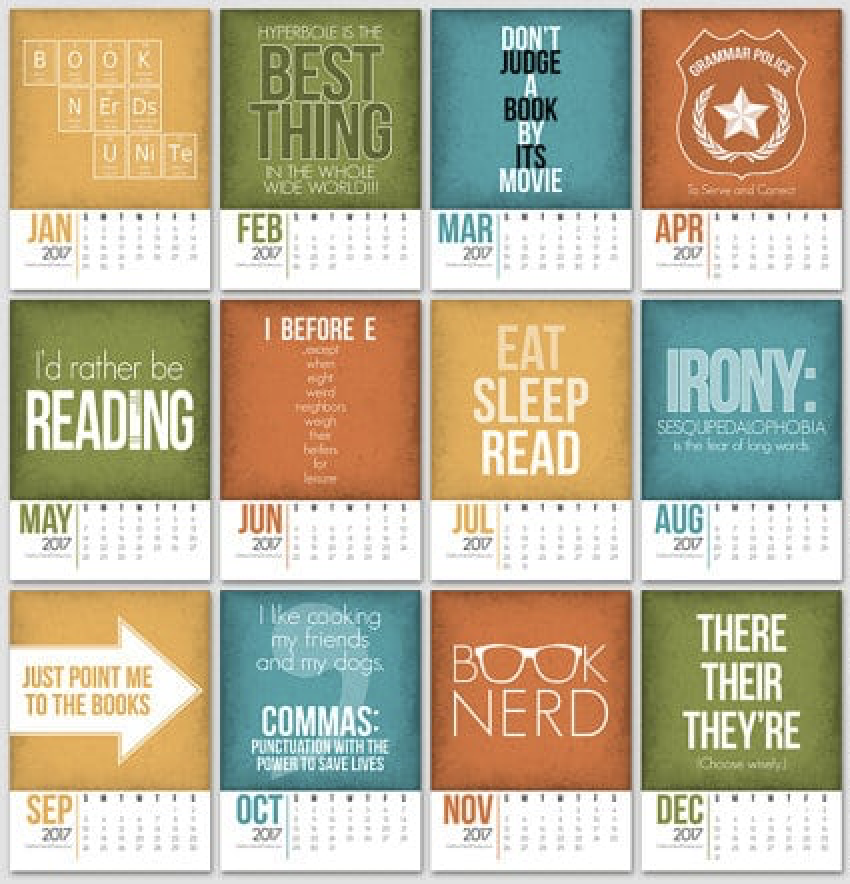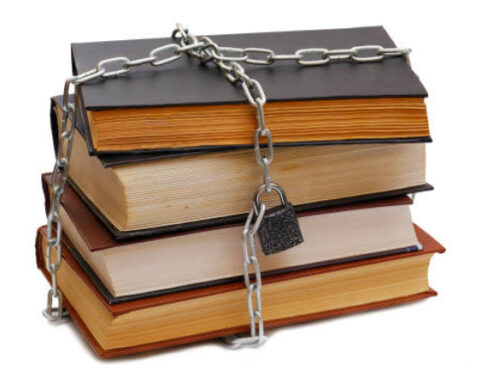 In Hollywood, there’s a pretty set calendar for when movies are released: horror movies are usually released around Halloween, high-concept blockbusters in the summer, Oscar movies start in November, movies that aren’t blockbusters or Oscar contenders in February. Does the book trade follow the same release schedule? The answer is, more or less, yes.
In Hollywood, there’s a pretty set calendar for when movies are released: horror movies are usually released around Halloween, high-concept blockbusters in the summer, Oscar movies start in November, movies that aren’t blockbusters or Oscar contenders in February. Does the book trade follow the same release schedule? The answer is, more or less, yes.
Peak reading and buying season is very much tied to the weather. February and March are generally good times to release a book because the weather’s not great, so people will be stuck inside, browsing the web and looking for something to read. Generally, people won’t want to read a dark book when the sun’s shining.
However, though summer is blockbuster season, it’s also the time when people aren’t locked to their computers, so it makes some sense to release a genre novel in the spring, so momentum can hopefully carry over into the summer (this is what happened with Amanda Hocking, who released books in April before they took off).
Alan Rinzler, traditional publishing expert, has this calendar for the mainstream trade:
Tie-ins by the month
January
Post holiday: Prime time for diet books, celebrity exercise books, and how-to books, including self-education, home repair, adventure travel planning, languages, and self-help books about finding a new relationship, renewing a marriage, or becoming a more effective parent.
Martin Luther King Jr. Day: For inspirational books about African American history, civil rights, peace and freedom.
February
Valentine’s Day: For loving gifts of books with hidden agendas, including collections of lyric poetry, romance novels, dreamy photos of romantic foreign cities like Paris or Prague.
End of the month: Books related to Major League Baseball’s spring training, with celebratory biographies, compilations of new statistical records, glossy picture books, and metaphorically inclined literary novels, all in place for the sport’s big opening day in April.
March
International Women’s Day: Books on the latest topical or historic issues around women’s health, reproductive rights, freedom from oppression and exploitation in hostile cultures, personal memoir, biography, quality fiction.
Easter: Books about Christ, biblical exegesis, inspirational, archeological, and illustrated children’s books about the resurrection and other relevant topics.
April
Holocaust Remembrance Day: Books about Jewish calamities and heroism during World War II, personal memoirs, new research about partisans and German rescuers. There are always many new titles for this large book-buying demographic.
May
Cinque de Mayo: Books targeting the rapid growing market for Hispanic-American fiction and nonfiction, history, politics, culture.
Mother’s Day: An occasion perfect for celebrative fiction, memoir, and appreciation to go with that bouquet of roses.
June
Graduations: Gift books for high school and college students. And in these economic hard times, a new category for graduating college students has emerged like Finding a Job When There are No Jobs, Guerilla Marketing for Job Hunters and many others you’ll see on the front tables during June.
July and August
Summer reading: These are the weeks devoted to summer book sales, the season for category fiction like paperback mysteries, romances and science fiction.
September
The anniversary of September 11th: The events of that day have inspired books in many genres, including politics, history, memoir, biography, education and children’s books.
Off to college: Books for for college freshmen learning the ropes about class and time management, roommates, and coping with issues like sex and drugs, loneliness and insecurity. Also advice books for parents seeking guidance for their 18-year-old’s first time away from home.
Back to school: Children’s books, also parenting, education, technical, professional, literature and fiction.
October
Halloween: Horror movie tie-in books and new titles in costume, art, graphic novel and other fiction.
November
Thanksgiving: Books for children, cookbooks, history and spirituality are popular markets for this holiday.
December
Holiday books for Christmas, Chanukah, the traditional African American Kwanzaa feast, and other special year end observances.
That list is mainly about buying habits, not necessarily release date. So while these days suggest when buying habits are at their peak for certain genres, it doesn’t necessarily mean this is when a book should be released. As mentioned, you want your momentum to build before the peak season hits, so a good measure is to release a book 2 months before whatever peak season is appropriate, and THEN focus your marketing efforts heavily during the peak months.
To simplify the above list, it is as follows:
January – April: All genres of fiction – Romance most of all, Self-Help (New Years Resolution books)
May-August: Fantasy, Adventure, Science Fiction, Thriller, Travel
September-December: Horror, Paranormal, Literary Fiction, Children’s Books (for Christmas)
This is just a general guideline, and each writer will have different requirements. If you’re in the middle of a popular series and readers are clamoring for books, it doesn’t make sense to sit and wait on a release. Self-publishers are often releasing several books a year (more so than traditional authors), so your release date will be dependent more on when books are completed and ready to publish than holding to these rules.
There’s a lot of criticism of traditional publishing for waiting to release a book for a year, but there is a method to their madness. Partly it’s to do with the above schedule, and partly it’s because they have a huge number of books to juggle on their roster. Self-publishers have a lot more freedom than this: it’s one of the major advantages to self-publishing.
The main question to ask yourself is: is this the type of book you’d read at this time of year? One thing is certain, you shouldn’t rush a book to publication, and if it means waiting a few months to release a book – especially if you’re in Kindle Select and want to benefit from the first three months of a KDP release, which has the most visibility – then self-publishers should mimic trad publishing and release books on a schedule.
Get an Editorial Review | Get Amazon Sales & Reviews | Get Edited | Publish Your Book | Enter the SPR Book Awards | Other Marketing Services






















This was really helpful. I learned a lot from the recommendations. Thank you!